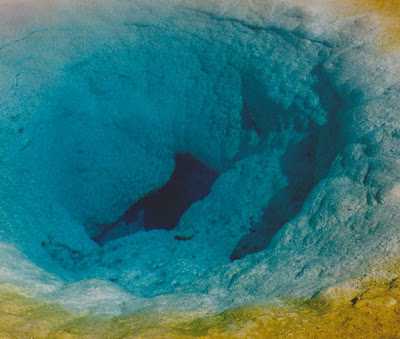
The late-summer opening of a new visitors' center at the Old Faithful geyser has drawn new attention to Yellowstone National Park, the first national park and one that owes its existence partly to the wonder that is Old Faithful.

 Quito, the capital of Ecuador, is one of the most exotic cities in the Western Hemisphere. The Spanish and Catholic influence here is countered by robust numbers of people descended from the ancient Incas and other native groups. The country's many unique traditions turn any visit into a cultural exploration. If you're there in December, look for the años viejos (stuffed dummies that stand upright). They're often accompanied by a live person, posing as the dummy's wife, who solicits money. The dummies are burned on the last day of the year for luck, a custom practiced throughout the country. That turns the wife into a "widow," one of whom is seen in the Ecuador item in the column on the right side of this blog.
Quito, the capital of Ecuador, is one of the most exotic cities in the Western Hemisphere. The Spanish and Catholic influence here is countered by robust numbers of people descended from the ancient Incas and other native groups. The country's many unique traditions turn any visit into a cultural exploration. If you're there in December, look for the años viejos (stuffed dummies that stand upright). They're often accompanied by a live person, posing as the dummy's wife, who solicits money. The dummies are burned on the last day of the year for luck, a custom practiced throughout the country. That turns the wife into a "widow," one of whom is seen in the Ecuador item in the column on the right side of this blog. 

We can debate forever about the differences between a traveler and a tourist, but sometimes it pays to step off the snob stool and just go for the best value possible, especially on a vacation. Unless you’re on a really tight shoestring budget, often you can get a stupendous deal by trolling where the tourists go to book their trips.
Case in point: my just-finished vacation in Puerto Vallarta with my family. I could have booked us into a crappy downtown hotel with barely functioning air conditioning and cramped quarters for around $75 a night for three, nothing included, with the nearby beach choices a few blocks away being lousy. Instead I went onto SkyAuction.com and scored four nights at an all-inclusive hotel on the Nuevo Vallarta beach for $82 a night all-in. For that amount we got all the booze we could drink, all the food we wanted to stuff ourselves with (three of us!), a nice room with a panoramic ocean view, Wi-Fi, and lots of activities. (The boogie boarding rocked.)
Yes it was cheesy and yes we felt like your average package tourists, but so what? My daughter had a blast, there was a never-ending Negra Modela tap going, and we ate pretty well without ever taking my wallet out of the room safe. I would definitely do it again.